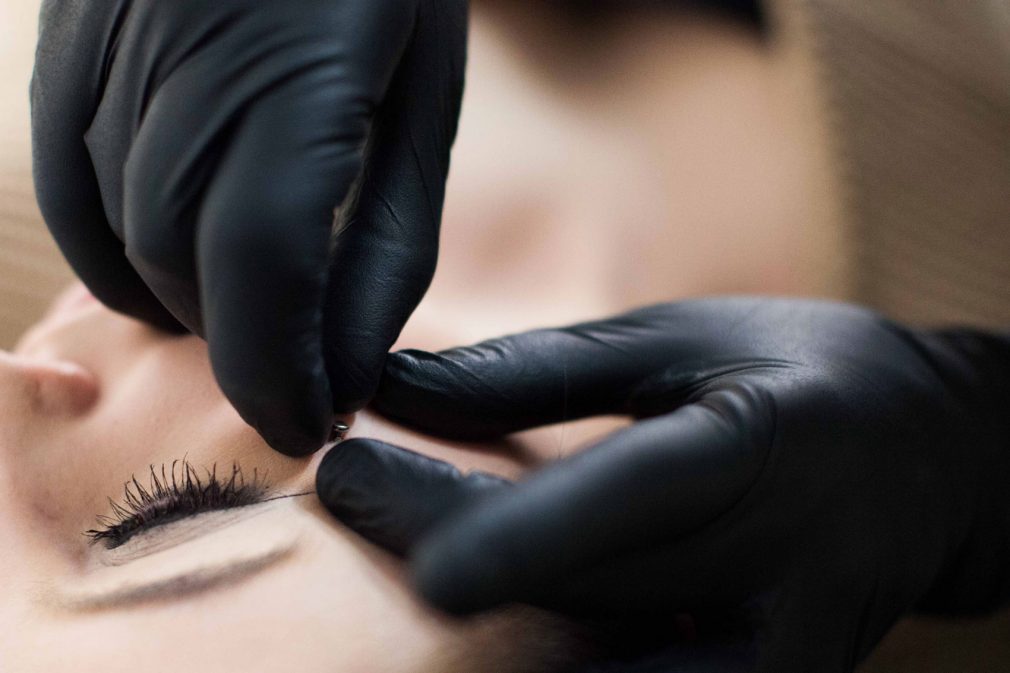13 REALLY important tips to ensure a safe and happy Toronto piercing
You might agree that:
With so many body piercers, piercing parlours, and tattoo shops in Toronto (or any other city for that matter), it’s really hard to figure out where to go for your next piercing. How do you know what to look for in a piercing artist and shop? And most importantly, how do you make sure you are staying safe?
Fortunately, today I’m going to arm you with 13 simple, but really important tips!
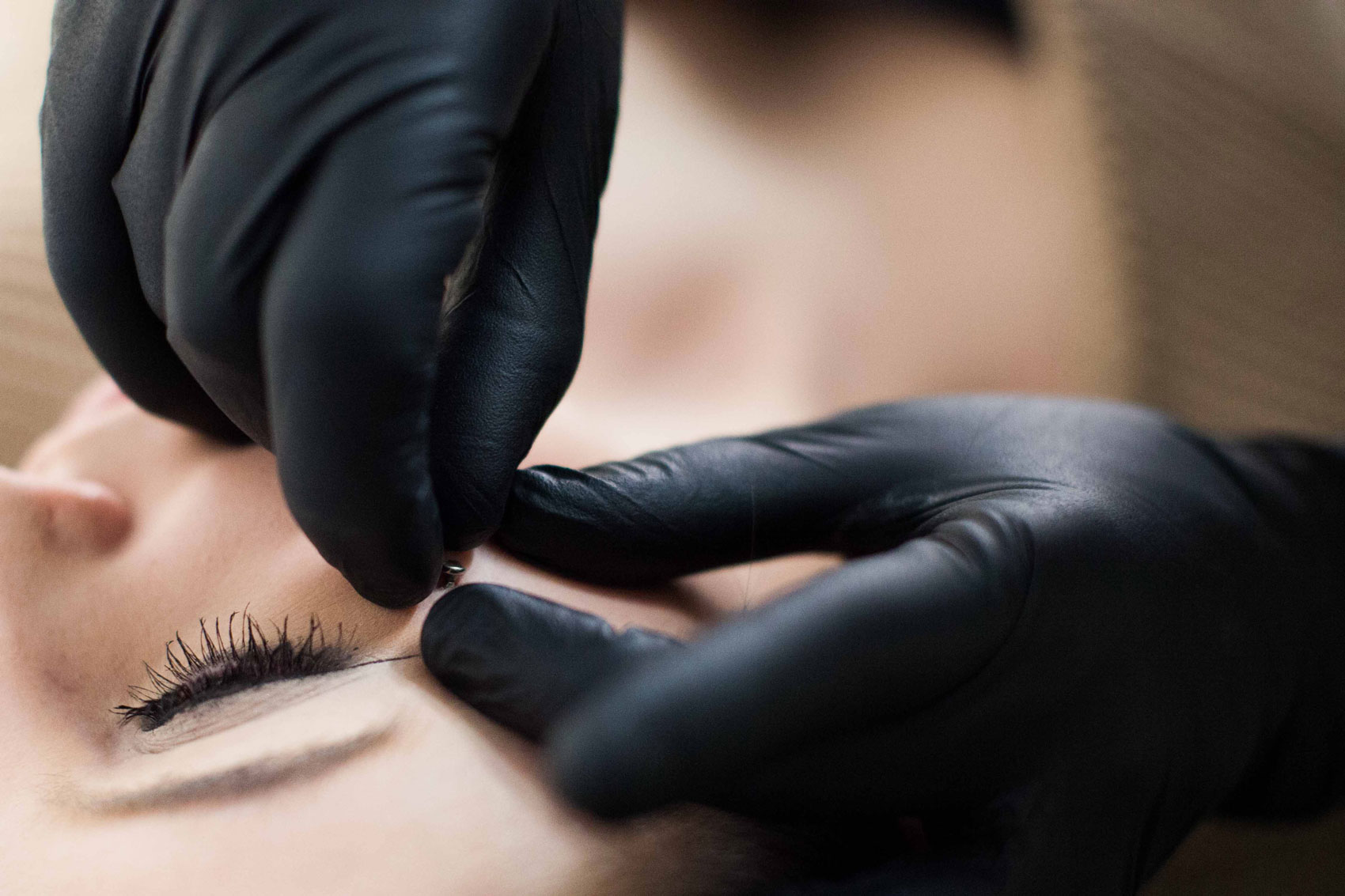
These tips come from over a decade of experience in piercing, and today I’m going to share them all with you.
My biggest concern is always with safety. This guide was prepared to help anyone (not just in Toronto) to make an informed decision when deciding on a piercer or Toronto piercing shop.
But first:
As with many people looking to get a piercing, you may have asked yourself:
“Why is there such a difference in pricing among piercers around Toronto? And why would I pay more for the same thing?”
The answer is simple—it’s not the same thing!
I have heard many people say:
“a piercing is a piercing, there’s not much to it”
If you or a friend are thinking about getting a piercing (and you agree with that statement), you really need to keep reading!
So what is a good Toronto piercing and why does it often cost more?
There are several important reasons for why a good, safe piercing costs more. First and foremost, the training, skill, and experience of the piercer will often determine the price.
Piercing and tattoo shops have become very common in the city, and so have the cheap deals. Look up “$12 piercings Toronto”. Pages of results will appear. But should cost really be the most important factor?
You need to ask yourself:
“Is a cheap piercing really worth it”?
If price is your main concern, you might feel differently after reading this article.
But first: I want to make something clear. A high price tag does not automatically ensure that the piercing is properly done, and that all of the necessary health and safety procedures have been followed.
Also, I am not in any way implying that a lower cost piercing absolutely means that the piercing is done improperly, or that health and safety precautions have not been taken. But, as with most things in life, you generally get what you pay for.
So that’s out of the way.

4 happy and healthy septum piercings by
The Ace and Sword Tattoo Parlour
Why does experience matter?
As with all body modification—including tattoos, scarification, and even plastic surgery—piercing is an art. As with all art forms, developing an eye and skill can only come through training and experience. A piercing artist with skill and experience is more likely to give you the best, safest result. With a higher level of skill though, usually comes a higher cost.
So now you’re probably thinking:
“Okay, I get it. Now what?”
Just read the list below! I have prepared this to help anyone who is thinking about getting a piercing, whether it is the first or the tenth. There are more aspects to a proper piercing than you probably ever thought existed. And if the shop is ignoring EVEN 1 of these things, it can potentially result in a dangerous piercing.
Hopefully you will soon agree that cost is not the most important thing to consider when getting pierced. A cheap piercing can not only look bad, but can be dangerous.
Okay, so let’s dig in.
Here are the 13 things you NEED to look for or do, when deciding on your next body piercer or Toronto piercing shop:

Check online reviews
Check review sites such as Yelp and Google. Also, take a look at the shop’s social media presence, such as their Facebook page.
Most reputable piercing/tattoo shops that have been around for a while should have reviews. Although this is not going to give you the whole story, it is definitely a good place to start.

Meet with your piercer first
It’s a good idea to actually go to the shop you are interested in before getting your piercing. This will give a good opportunity to get a feeling for the shop and the piercer beforehand.
Once you have met with the piercing artist, ask yourself these questions:
“How approachable is the piercer?”
“Does he or she seem knowledgeable, answer questions, address concerns, and overall, care about my piercing?”
“If there is a problem with the piercing, does the piercer seem willing to give support after the fact?”
“What is the piercer’s general attitude?”

Keep in mind: stretching takes time
An inexperienced piercer may attempt to stretch your ears too quickly. If done incorrectly, this can cause a painful blowout.
A blowout can happen when the unhealed skin of the ear lobe pushes to the back of the ear during the stretch. Not only does it hurt, if left untreated, this can cause scarring and an unsightly flap of skin on the back of your lobe (not a good look!).
If quick stretching is your goal, ask your piercer for alternative methods.

The more complicated the piercing, the more experience is needed
A complex piercing requires more skill and experience to perform properly. Make sure your piercing artist is properly trained when you are getting a more complicated piercing(s), such as a genital piercings.
Part of being an experienced piercer is understanding anatomy and how a piercing will look and work on a particular person. Experience will allow the piercer to properly assess whether or not your desired piercing is appropriate for you, and discuss all of the options available.
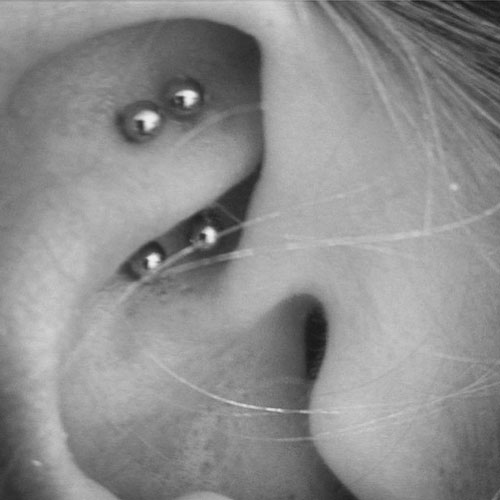
Rook piercing by The Ace and Sword Tattoo Parlour
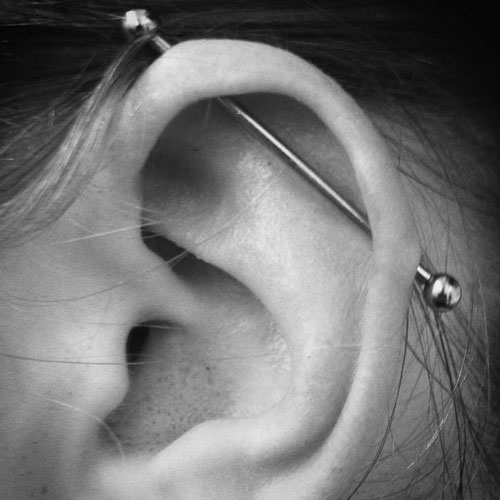
Industrial piercing by The Ace and Sword Tattoo Parlour

Microdermal by The Ace and Sword Tattoo Parlour

The after care process is fully explained—beforehand
The after care process should be fully explained and discussed with you beforehand. A professional will thoroughly explain the after care process. Then, recommend the right products to ensure your health is protected and that the piercing heals properly.
For example, maybe you want to go swimming in a pool while on vacation, but now you have an open wound to care for. Discuss anything of this nature with your piercer beforehand, to ensure a safe healing process.
Here is a list of our piercing after care procedures.

Only good quality jewellery is used
Sterilised jewellery made from surgical grade steel should be used for your piercing. There are 2 grades of surgical grade steel—316L and 316LVM. Both are acceptable for piercings. Ask about the jewellery beforehand, and do not, under any circumstances, allow poor quality jewellery to be used for your initial piercing.
Using poor quality, cheap jewellery is a bad idea for many reasons:
- Cheap metals are often used, which can cause irritation or even infection.
- Jewellery made from cheap metals can even, in some cases, cause rejection as the body pushes the offending metal out.
- What is the point of spending any money on a piercing that could just end up being rejected?

An evaluation is performed before the piercing
A skilled and experienced piercer will be able to properly assess the piercing you are interested in. Then, will be able to help determine whether or not it is the right choice for your anatomy.
Depending on your size, shape, and body structure, not every type of piercing is going to work for you. Your piercer should sit down with you and go over the options before going ahead.

Marking for the piercing, after discussing options

The risks are fully explained beforehand
There are many risks involved with piercing, which differ depending on the type of piercing being performed. You should be made aware of any and all risks associated with the type of piercing you will be receiving.
Be prepared with questions or concerns, which should be fully discussed before beginning. For example, a labret piercing may cause gum damage.

Proper piercing needles are used
Hollow piercing needles should always be used for your piercing. Hollow needles work by pushing the skin aside, rather than simply making a hole.
Also, not only is using a proper piercing needle less painful, it actually results in faster healing.
Your piercer should also be using a sterile, single-use, pre-packaged piercing needle. The needle should also be checked for any flaws or burrs before use.
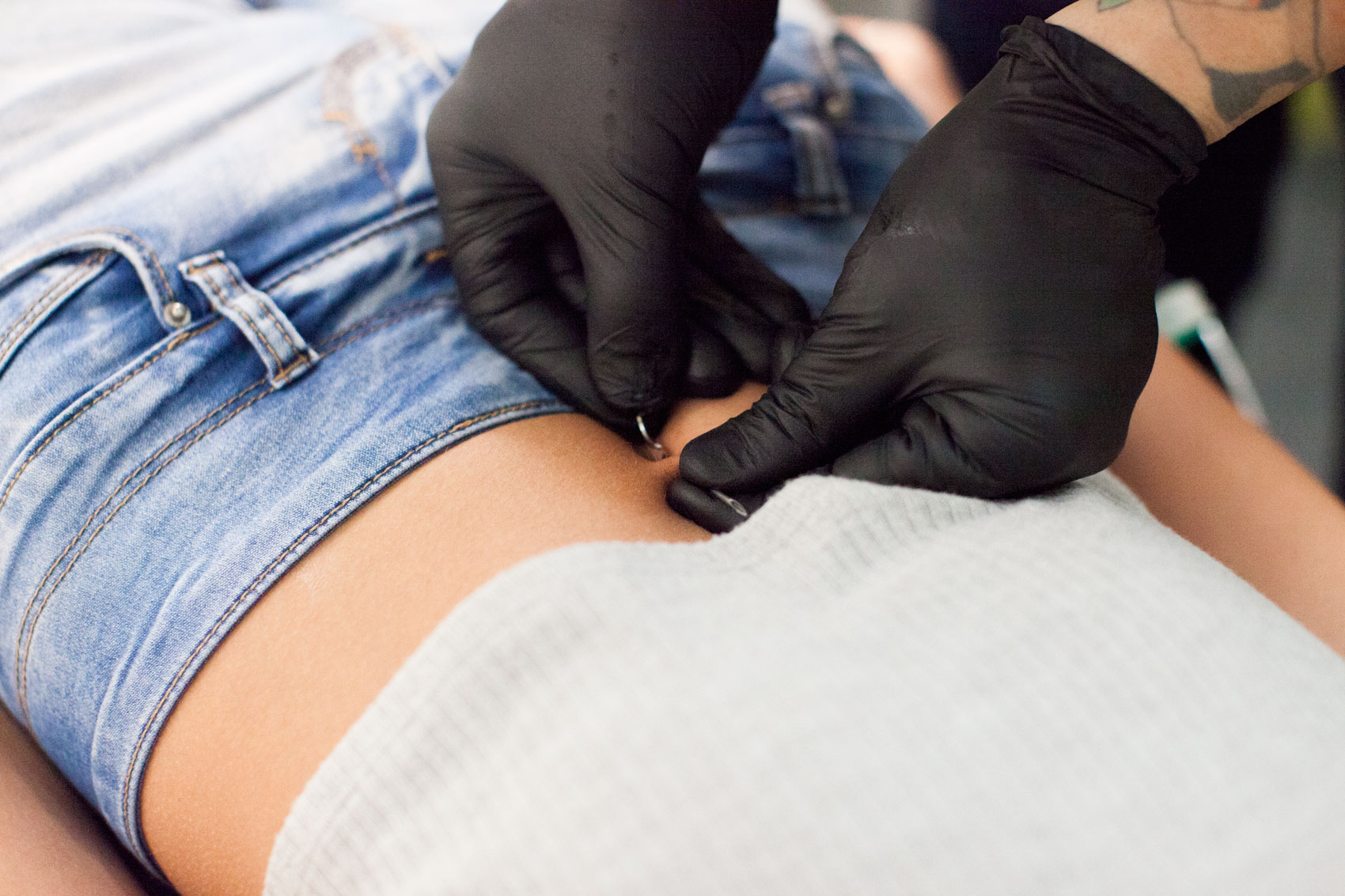
Hollow piercing needle shown

The right size of jewellery for the piercing
When a piercing is first performed, it will swell. An experienced piercer will know which size of jewellery to use, as it needs to allow for the swelling of the piercing. If the wrong jewellery or improper size is used, the piercing can actually end up healing around it. This can result in the jewellery being embedded in your skin. This will cause extra swelling and pain.
In addition, an improperly healed piercing carries a much greater risk of infection.
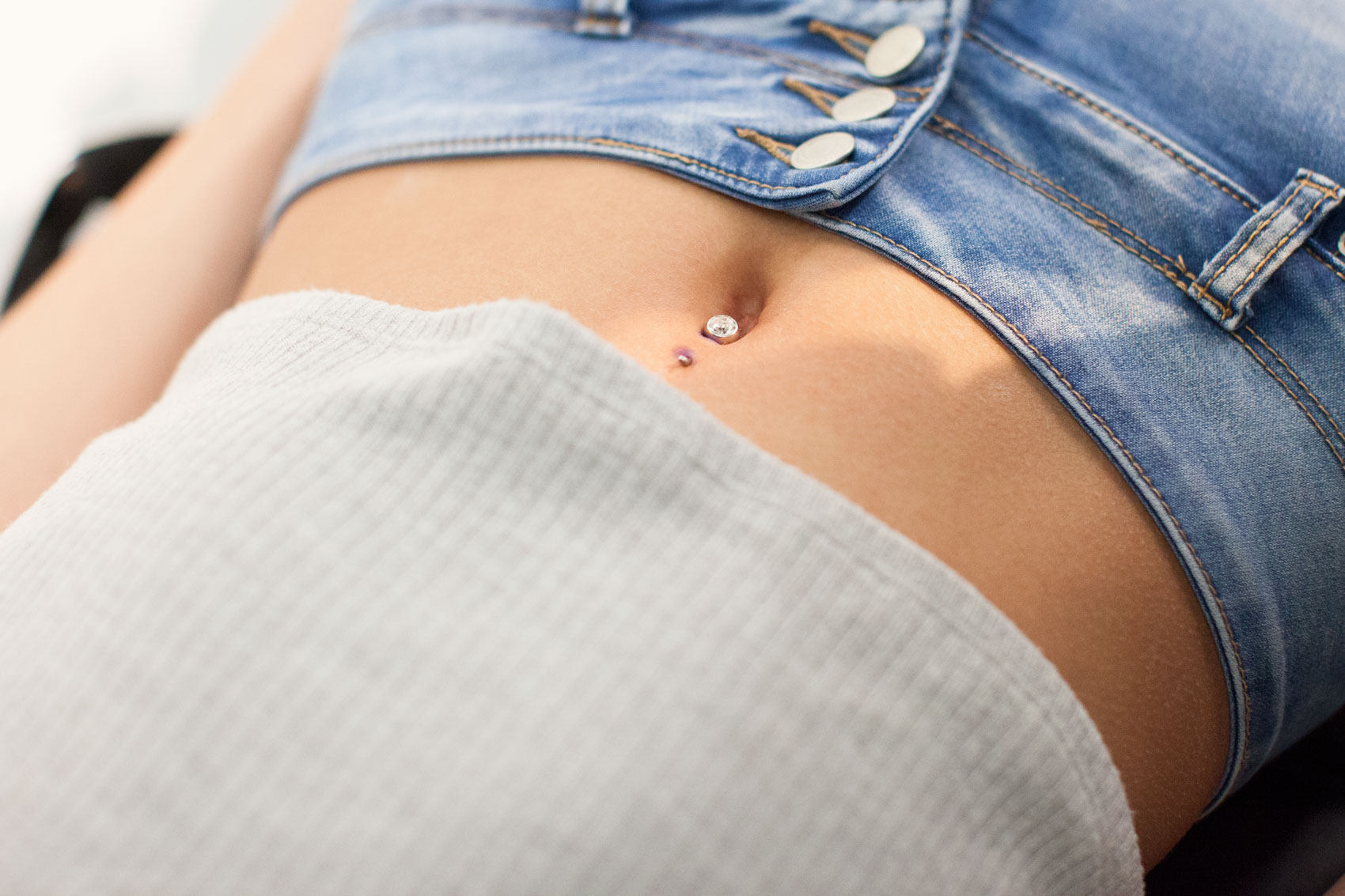
A successful piercing, using good quality jewellery, of the proper size

NO PIERCING GUNS!
A skilled piercer will never use a piercing gun. There are several health and overall piercing quality issues associated with piercing guns.
For example, it is impossible to clean the inside of the piercing gun between clients. Even if the outside of the gun is wiped down with an antiseptic, pathogens can still survive within the gun. These pathogens can then be passed to the next client if the skin or jewellery comes into contact with the inside of the gun.
To read more about the hazards of piercing guns, see this entry from the Association of Professional Piercers.
In addition, it is illegal in Ontario to use a piercing gun on anything other than ear lobes.
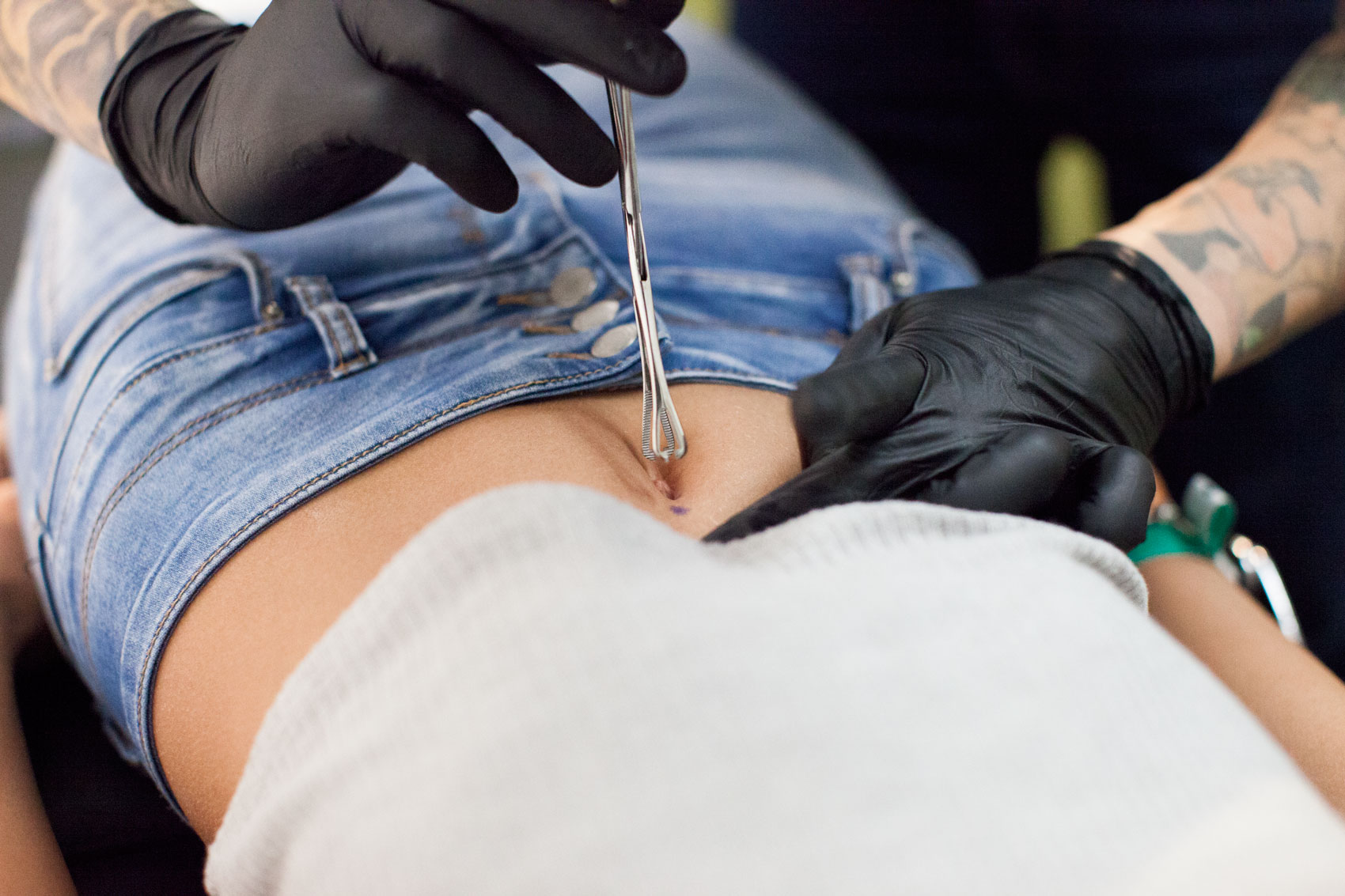
The right tool for the job—an autoclave sterilised piercing tool shown

Proper training
Besides learning the right piercing techniques, proper training includes, most importantly, the essential education for avoiding cross-contamination and preventing bloodborne pathogens. Training also includes a strict standard of ethics and best practices that must be followed.
A skilled piercing artist has completed an apprenticeship with an accredited piercer. Don’t be afraid to ask your piercer about his or her training!
Also, going to a “piercing school” does not replace a proper apprenticeship—where valuable experience is gained by the piercing artist.
And the #1, most important part of a safe piercing is:

Equipment is sterilised in an autoclave
Besides needles, piercing also involves tools. These tools, if not properly sterilised, can transmit diseases or bacteria between uses. Primarily used to sterilise medical instruments, an autoclave also sterilises our piercing instruments. As per health regulations, autoclaves are to be tested bi-weekly, using third-party testing.
As a client, you should be given access to the tattoo or piercing shop’s autoclave records upon request. Although not required by law, allowing customers to view records when asked is just good business practice.
If a shop does not keep the records or does not allow you to see them, this should be cause for concern. A tattoo and piercing shop that properly uses an autoclave in good working order should have nothing to hide!
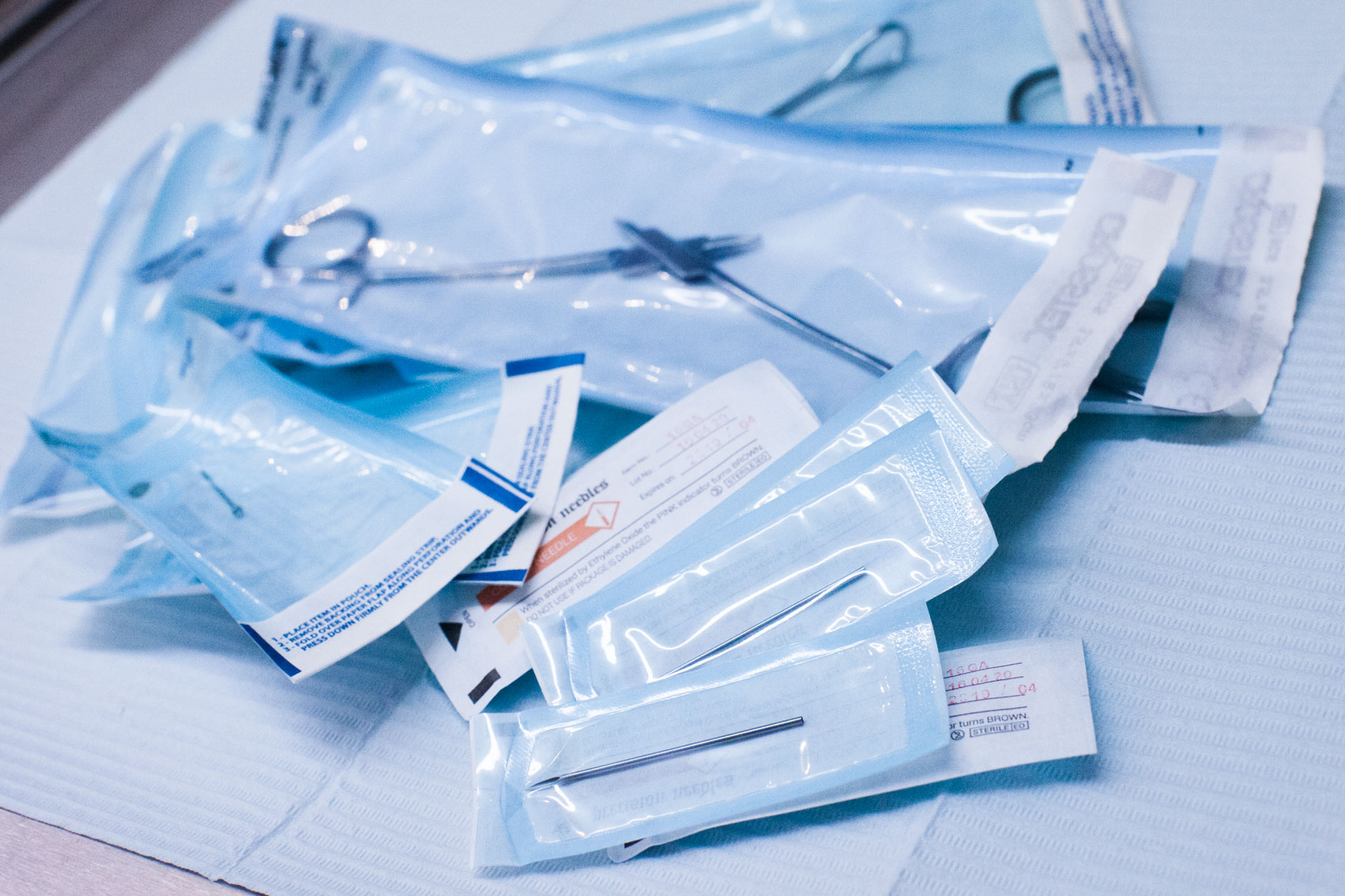
Autoclave sterilised tools and one-time-use needles shown
Final Words
Piercing is not something to take lightly. As with any medical procedure, piercing also involves breaking the protective layer of skin with a needle. Then, inserting metal objects (think of piercing like “mini surgery”). You are therefore vulnerable to contamination if the proper health and safety measures are not taken.
If you only take one piece of advice away from this article, please make sure that it is make sure your piercing artist is trained properly in health and safety and infection control. And of course, uses single-use needles, with autoclave sterilised tools.
As discussed above, cross-contamination and bloodborne pathogens are the main health risks involved. I cannot stress enough how important it is to make sure that your piercer and shop take health risks seriously and have strict safety procedures in place.
One more thing:
The importance of aftercare is another point worth repeating. Make sure that you fully understand the after care process, and that you take the appropriate steps to ensure proper healing. Read our full list of Piercing After Care Procedures.
I hope this article will help you make an informed decision when choosing an artist to perform your next Toronto piercing.
Stay safe out there!
About me
My name is Mel, and I have been a piercing artist for more than 10 years. I completed my training and apprenticeship in California. I then returned to Toronto to continue my career in piercing.
To date, I have done more than 15 000 piercings, and my passion for the artform has only grown stronger. I pride myself on my attention to detail, and the care I take with every client. I am serious about piercing, and I take the time with each person to make sure that the piercing is appropriate and will give the desired results.
Check out my bio for more information and feel free to contact us anytime if you are looking for a great piercing. I work at the Ace and Sword Tattoo Parlour in West Toronto.
Share this Post
Have I missed anything? Do you have any other helpful tips to add to the list?
Leave a comment below and let me know which of these tips you find the most useful.
If you liked this article, don’t forget to share!

